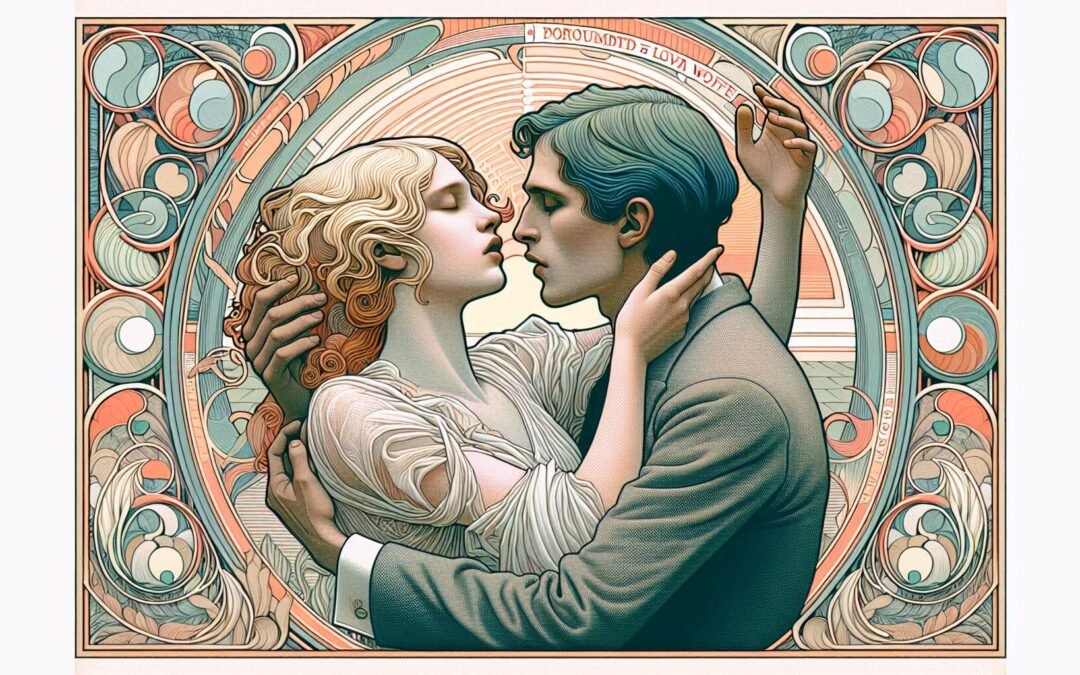Deep love poems for wife transcend centuries, illuminating the relationship with artistry and insight. Early Sumerian clay tablets bear witness to Inanna’s sacred and passionate longing, while Egyptian lyric fragments retrieved from the Chester Beatty Papyrus conjure courtship’s allure against the Nile’s ancient hush. Journeying across the Mediterranean, the Song of Songs saturates Hebrew scripture with both sensuality and mystical resonance. Reception of these love poems shaped Western and Middle Eastern poetic identity, infusing generations of romantic expression and influencing collections celebrated today by those seeking rhyming poetry about love.
Deep Love Poems for Wife
Poetic traditions honoring the wife journey from Sanskrit and classical Chinese to Persian ghazal and medieval troubadour song. In India, Kalidasa’s metaphoric exuberance refracts marital devotion as a divine drama, entwining the sacred with everyday fidelity. Bai Juyi’s Tang-era verses fold Buddhist wisdom into the fabric of affection, harmonizing longing with serenity. Pillow books and tanka poems from Heian Japan preserve moments of shared laughter beside the brushstrokes of domestic routine, a testament to women’s artistic voice that still echoes through modern poetry. Rumi and Hafez, masters of Persian poetry, veil conjugal intimacy in metaphors borrowed from mystical union. Troubadours celebrated partnership with music and lyric, amplifying joy rather than mere idealization. Shakespeare invigorated the Petrarchan sonnet’s tradition, layering emotional contradiction and fidelity across each verse, while Elizabeth Barrett Browning transformed partnership into a dialogue of vulnerability and revelation. Sonnets from the Portuguese embody this genre’s intricate balance of joy and vulnerability, while Urdu poets like Mir Taqi Mir explored marital longing through the evocative form of ghazal, now explored further in guides to types of love poetry.
Poetry chronicling spousal love constantly shifts with changing eras. Early sacred poems reflect harmony, duty, and fertility, while later traditions, evolving under Enlightenment philosophy, emphasize individual feeling and the luminous complexity woven into shared lives. Modern poets, influenced by new freedoms of voice, draw from domestic routine, adversity, joy, and loss, offering a nuanced tapestry of commitment. Cultural differences shape tone and imagery, from the decorous understatement of ancient Japanese haiku to the lush intensity seen in Russian and Persian traditions.
Female poets honor, question, and reinvent spousal love from within. Anna Akhmatova finds resignation and tenderness amid loss; Adrienne Rich complicates affection with questions of autonomy and transformation. These voices redefine the power and fragility at the heart of romantic collections, embedding partnership with revelation rather than solely praise. The evolution continues, as younger poets seek connection amid shifting cultural landscapes, expanding the breadth of what constitutes marital devotion in love poems for Australian wife.
Emotional Depth, Authenticity, and Individuality
Intense affection in poetry lives through gesture, silence, and attentive presence rather than easy declarations. Emotional complexity draws breath from the minutiae of routine, allowing meaning to shimmer in the turning of a page, the quiet support that lingers at dusk, or the pattern of sleep traced by shared years. Poets construct intimacy through risk, unveiling doubt or flaws, and acknowledging vulnerability; these moments charge language with absolute sincerity. The beloved’s singular self, from quirks to piercing insight, shapes every stanza—she emerges as both muse and catalyst for renewal. When poets imbue their lines with this sense of genuine awe, the result resonates far beyond formulaic praise, inviting the reader to reflect on enduring connection as well as the power of individuality. Sometimes, as seen in good morning poems for her, this sentiment shines brightest in the honest simplicity of daily tenderness.
Symbolism connects strong emotion to tangible objects. A worn table etched with years of conversation evokes shared endurance, while the evening’s fading light suggests the transience of passion balanced against steadfast presence. Simile and metaphor transform relationship dynamics: a wife becomes compass, anchor, or the one certainty around which change circles. Rhythm and refrains mirror the constancy of shared affection, reinforcing devotion across repetition. In works shaped for the beloved, the power of language both reveals and shields, forging intimacy while carving space for renewal. For those unsure how to begin expressing these complexities, resources on how to write love poetry provide guidance.
The greatest Deep Love Poems for Wife magnify commitment as a shared journey tracked through seasons, transformation, and memory. Rather than linger on first passion, poets explore layered histories (inside jokes, whispered sorrows) sculpted through time together. The narrative of couplehood accrues meaning, from resilience in the face of adversity to the reacquisition of trust after dispute. Reconciliation carries its own aesthetic gravity, harmonizing rupture and rebirth inside the lines.
Partnership grounds spousal poetry in collaboration, mutual striving, and genuine admiration for personal growth. Admiration moves beyond cliché, highlighting wisdom, humor, strength, and the subtle beauty of perseverance. Works that reveal both triumph and disappointment become testaments not to perfection but to continual becoming. This quality is manifest in collections spotlighting life’s subtler triumphs, much as can be found in online anthologies spotlighting romantic poems for wife.
Navigating challenge becomes a poetic rite. Through argument and forgiveness, poets chart renewal. Love’s durability is measured not only by celebratory moments, but by the ability to persist through uncertainty and change. The shared journey does not erase hardship but renders it part of a narrative marked by growth and curiosity. The best poems echo resilience, a daily invitation to recognize the beloved’s evolving role in shaping hope or vision.
This dynamic finds expression in global traditions, as seen in Japanese haiku’s distilled moments or the Persian ghazal’s interplay of yearning and devotion. Each form, each poetic device, speaks differently of commitment and possibility. For further inspiration, browse a curated goodnight poems for her collection, merging the universal and the intimate with fresh language.
Celebrating Technique: Symbolism, Structure, and Sonic Craft
Spousal love poems achieve nuance and resonance through careful selection of poetic technique. Imagery—woven into comparisons, metaphors, and tactile detail—invokes presence even through absence. A letter found years later, the secret light by which a wife reads late into the night, or the pulse of laughter recalled during solitude, all serve as conduits for layered feeling. The tone achieves its most affecting register when fused to authentic observation, balancing admiration with humility. This interplay can be most apparent in recognized collections, such as those guides showcasing best love poetry books.
Poetic structure both shapes and reflects the writer’s priorities. Sonnets cultivate intensity inside disciplined architecture, every rhyme and volta reinforcing devotion with formality. Free verse channels spontaneity, mimicking the unpredictability of shared life. Haiku captures fleeting togetherness; ballads bear witness to legends of loyalty. The selection of form announces intent, whether grand or understated. For readers curious about structural nuance, resource pages featuring an ode or a haiku can guide exploration.
Sonic devices intensify the poem’s spell. Alliteration and restrained rhyme pattern language around repeated sounds, echoing the rhythms of familiarity in spoken affection. Word choice, from softly sibilant to commanding consonant, allows tone to rise and retreat, matching passion or tranquility as needed. Refrains evoke constancy, making memorable mantras of recurring phrases—a device especially powerful in poem for her to make her smile features. The most memorable works synthesize musicality and insight, so form and feeling arrive fully entwined for the reader.
Cross-cultural comparison reveals even richer technique. Chinese poets utilize understatement and natural imagery, while Persian and Urdu traditions find spiritual and corporeal unity through metaphysical metaphor. Western traditions, from Greek lyric to modern English free verse, diversify tone based on shifting ideals of marriage, individuality, and partnership. This interplay of structure, voice, and tradition keeps spousal love poems evolving, ensuring that every generation will find its own route to honest admiration and awe. For those seeking more on poetic innovation, Britannica’s poetry overview provides context and broader connections.

